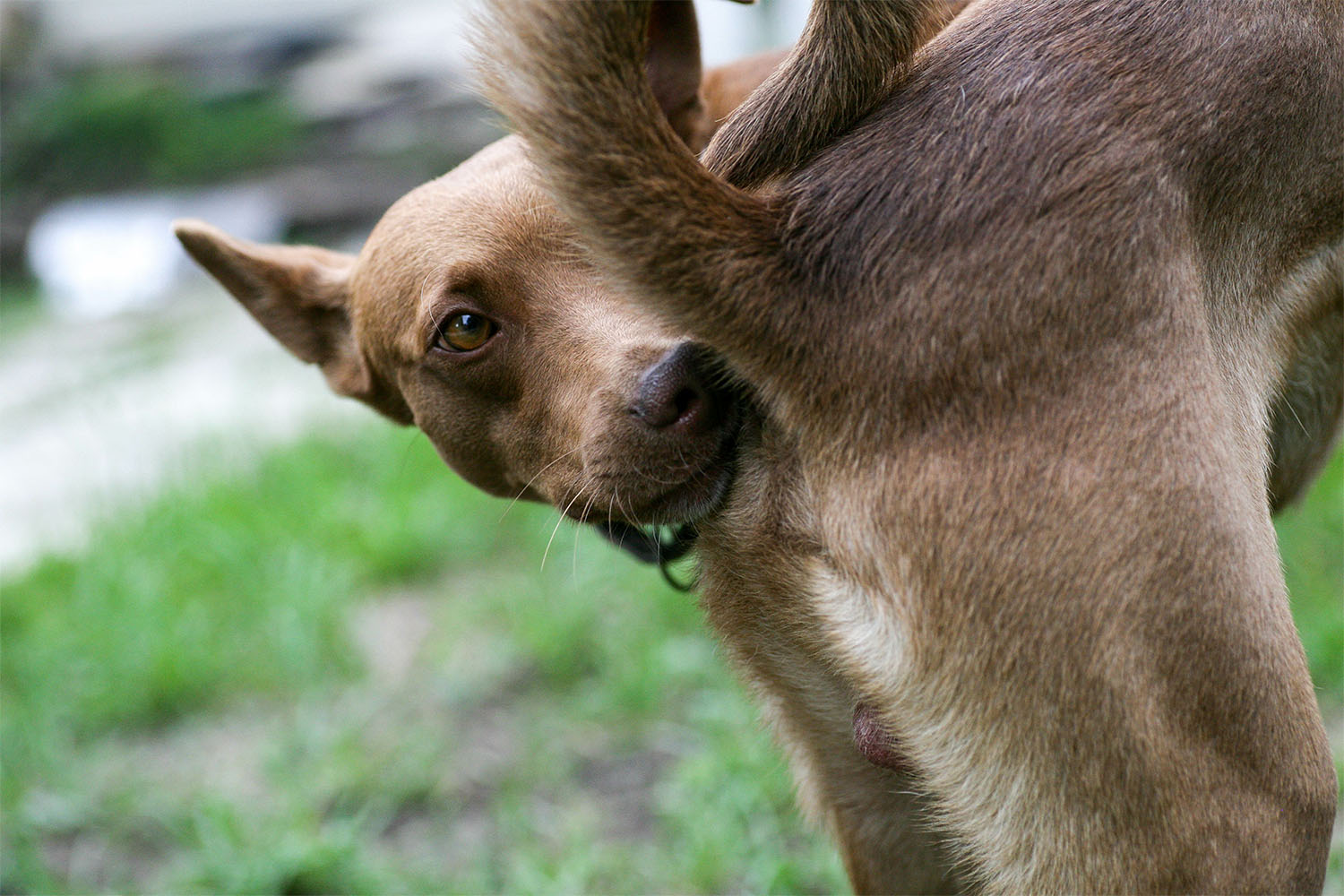Nice to meet you! As humans, we like to greet each other by waving, handshakes, or hugs. Each varying degree of greeting is determined by our relationship with a person.
However, with dogs, they really get up close and personal by sniffing each other’s butts! No matter if they are meeting another dog for the first time or if it is their best buddy, to each other’s rear ends, they go. Talk about making a first impression!
While we would never imagine greeting another person like this, this is “Etiquette 101” for our furry pals. It leads us to wonder, why in the world would you sniff there? Let’s chat about some reasons why our dogs like to sniff butts.
Sense of Smell
As a pet parent, you know the shenanigans your dog can get into when they follow their nose. Trash cans get overturned, holes get dug in the yard, and Houdini has nothing on some dogs if there is something out there they want to investigate.
Humans rely on their sense of sight to get to know the world around them, but your puppy uses their nose. Your dog’s sniffer is a powerhouse in the senses department, and it is the main sense they use to perceive information about the world around them.
A dog’s nose is hyper-sensitive — it’s 100,000 times more powerful than our smelling abilities. Our pups can be overwhelmed by scents we wouldn’t even pay attention to.
Let’s get into some reasons why dogs sniff each other’s butts and how that helps them learn about the world and other animals around them.
Greeting
While it’s easy to think that your dog is trying to smell another dog’s poop, that is certainly not the case. While the location is a bit unfortunate to humans, to dogs, it is just a part of nature. Dogs have anal glands, which are two sac-like glands that produce pheromones that give chemical signals that relay info about diet, health, gender, and mood.
By sniffing each other’s rear ends in greeting, dogs can exchange a wealth of information. Dogs can also remember each other’s scents and recognize when they have met a particular fluffy friend before.
Gathering Information
If you are old enough to remember chat rooms of the early days of the internet, you would remember being asked A/S/L, which stands for age/sex/location. This acronym helped to establish a little bit of personal information with whoever you were chatting with.
Dogs do the same when meeting new dogs or when they are in a new location. Canines use their sense of smell to gather information about the world around them. This even includes if things happened in the past, like another animal wandering through the area. A quick sniff gives them a multitude of important information.
When dogs meet each other, their smelling habits help to establish or reestablish their relationship. Even if your pups have met before, they will likely still sniff each other’s butts to get a status update on how your dog is doing. Like humans, dogs want to catch up with each other and get all the updated information since they last saw their pals.
Establishing Dominance
We know that dogs like to mark their territory, as this tells other dogs in the area that this particular patch of grass belongs to them. Urine marking helps your dog feel more secure in their space and that they are in charge.
When other dogs come into this space, they can smell that another dog has marked this territory. When the canines sniff each other’s rear ends, the connection is made that this dog’s scent matches the markings in the territory, and this helps to establish a social hierarchy.
While other types of body language help to establish dominance in dogs, you can see this dominance by order of sniffing. A dominant dog will initiate the sniffing, and the submissive dog will wait their turn.
If your dog is meeting another dog for the first time, watch this interaction closely. Some dogs do not like lengthy smelling sessions, and they may show aggression if it is going longer than they like. Watch for growling, raised hair on the back, certain tail positions, and raised lips. If this occurs, separate the dogs and try again later. Even dogs who have puppy play dates frequently should be monitored as they romp.
If things get a little hairy and you aren’t sure what to do next, check out our dog training resources for advice and training tips.
Get To the Bottom of Things With AskVet
While our dogs exchange information in ways that we may otherwise opt out of, we still want to get reliable and trustworthy information about our pets. Dog behavior can leave us scratching our heads sometimes. You may ask yourself, “Why does this behavior happen” or “Is this behavior normal?”.
AskVet is your go-to anytime you have a pet parent question. While sniffing butts is completely normal in the dog world, your human guests may not quite enjoy that same greeting when coming to your home. You may want advice on if there is anything you can do to get your dog from being the most personable welcome wagon ever, and our behavioral specialists can help you with that.
Whether you have a specific question or need to construct a personalized plan for your unique dog (or any other pet), book a virtual session with a Certified Pet Lifestyle Coach™ from AskVet who can help.
With personalized plans for your dog and the AskVet Clubhouse, you can feel like a well-prepared pet parent, no matter your dog’s breed or age. No need to go sniffing for solutions — we have them here!
Sources:
The Nose Knows: Is There Anything Like a Dog’s Nose? | AKC






